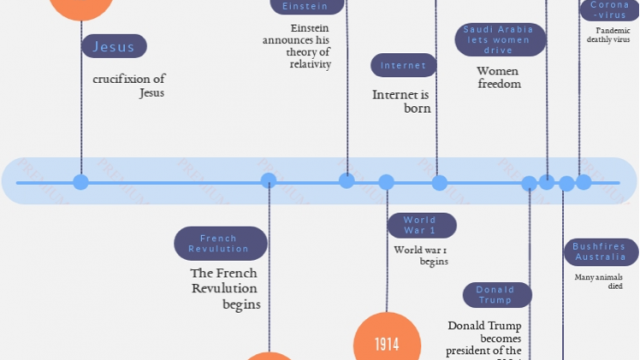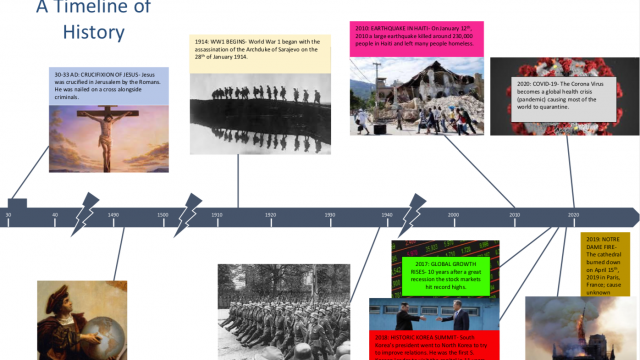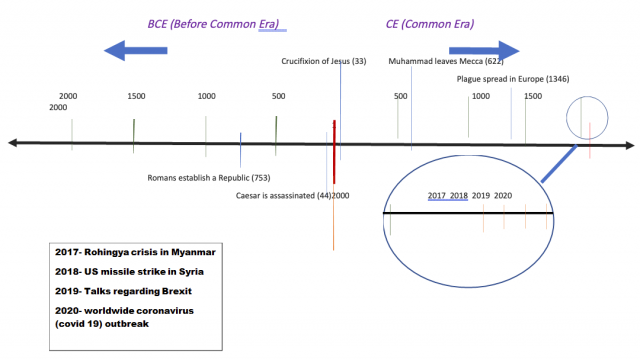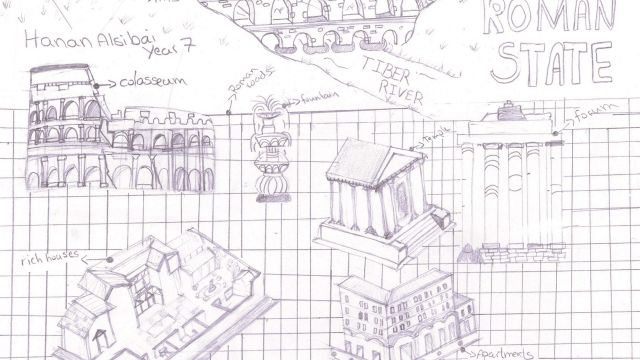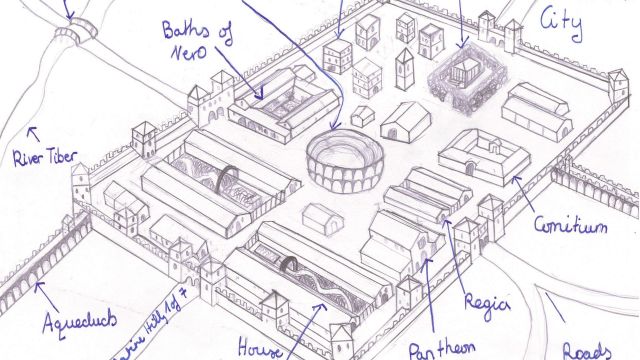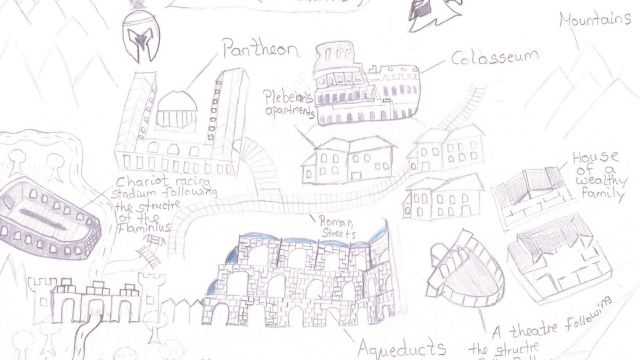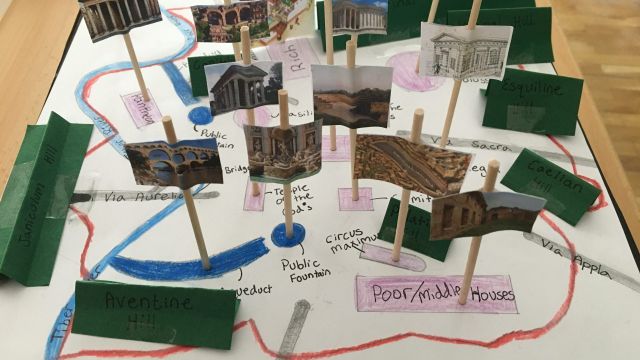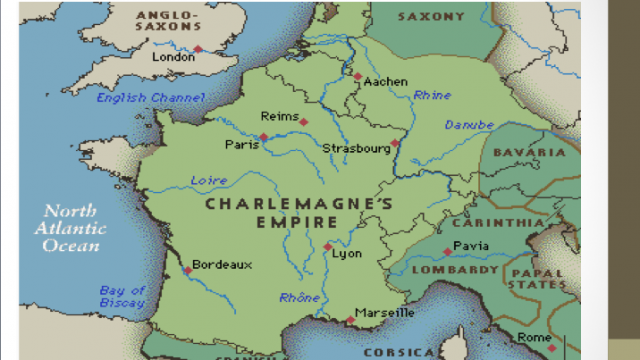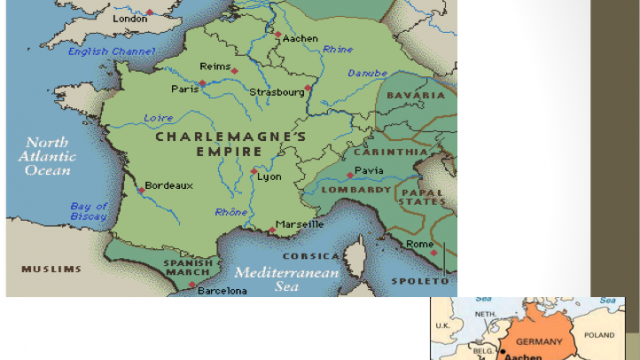Chronology of Ancient Roman Civilization
Click here to read the Ancient Rome Timeline
Roman Civilization: Practice using Video Simulated Test
Click here to view and read the Timeline of Alexander the Great (356 B.C.E. – 323 B.C.E.), the king of Macedonia who conquered an empire that stretched from the Balkans to modern-day Pakistan.
Click here to read about the great political mastermind Gaius Julius Caesar (100 B.C.E. -44 B.C.E.), who transformed the ancient Roman Republic into the powerful Roman Empire.
QUIZ TIME
| Ancient Roman Civilization | Ancient Greek Civilization | Mythologies | Legend |
|---|---|---|---|
| History of Ancient Rome | Olympic Games | Greek Mythology | Aristotle |
Charlemagne : His Empire united the Western Europe for the first time since the fall of the Roman Empire
The Black Death, 1347-1350
In 1347 a ship from Caffa, on the Black Sea, came ashore at Messina, Sicily. The crew of the ship, what few were left alive, carried with them a deadly cargo, a disease so virulent that it killed thousands in a matter of days. It is thought that the disease originated in the Far East, and was spread along major trade routes to Caffa. When it became clear that ships from the East carried the plague, Messina closed its port. The ships were forced to seek safe harbour elsewhere around the Mediterranean, and the disease was able to spread quickly. It reached Spain, France, England and Russia. During the Medieval period the theories about the cause of the disease were numerous, ranging from a punishment from God to planetary alignment to evil stares. Not surprisingly, many people believed that the horrors of the Black Death signalled the Apocalypse, or end of time. Others believed that the disease was a plot by Jews to poison all of the Christian world, and many Jews were killed by panicked mobs. Groups known as the Flagellant persecuted Jews and others who spoke against them. It killed nearly half of the people of the Europe in the 14th century and is known as Black Death because of the black spots that formed on the skins of the diseased people. Evidence suggests that it claimed lives of as many as 25 million Europeans.
The truth
The Black Death was an epidemic of bubonic plague, a bacteria-born disease. A disease caused by the bacterium Yersinia pestis that circulates among wild rodents where they live in great numbers and density. The bacteria was carried in the blood of wild black rats and the fleas that lived off the rats. Normally there is no contact between these fleas and human beings, but when their rat hosts die, these fleas are forced to seek alternatives including humans!
The symptoms
The plague produces several different symptoms in its victims. Bubonic, the most common form of the plague produces swellings, called bulboes, at the groin, armpits, or neck. The swellings are intensely painful, and the victims die in 2-6 days. The buboes are red at first, but later turn dark purple, or black in color. Pneumonic plague occurs when the infection enters the lungs, causing the victim to vomit blood. Infected pneumonic people can spread the disease through the air by coughing, sneezing, or just breathing! In Septicemic plague the bacteria enters the person’s bloodstream, causing death within a day. The speed with which the disease could kill was terrifying to inhabitants of the medieval world. The Italian author Boccaccio claimed that the plague victims “ate lunch with their friends and dinner with their ancestors in paradise.”
Consequences
The disease killed between 30-40% of the entire population of Europe. Given that the pre-plague population of England was in the range of 5-6 million people, fatalities may have reached as high as 2 million dead. The death rate was exceptionally high in prisons and monasteries. It has been estimated that up to two-thirds of the clergy of England died within a single year. Peasants fled their fields. Livestock were left to fend for themselves, and crops left to rot. By the end of 1350 the Black Death had subsided, but it never really died out in England for the next several hundred years. There were further outbreaks in 1361-62, 1369, 1379-83, 1389-93, and throughout the first half of the 15th century. It was not until the late 17th century that England became largely free of serious plague epidemics.
The great plague transformed the European society. It led to advances in medicines. Cities began to build hospitals and enforce standard for sanitation. With the population so low, there were not enough workers to work the land. As a result, wages and prices rose. Landowners offered extras such as food, drink, and extra benefits to labourers. The standard of living for labourers rose accordingly. Labour shortage led to increased wages. The nature of the economy changed to meet the changing social conditions. Land that had once been farmed was now given over to pasturing, which was much less labour-intensive. This helped boost the cloth and woollen industry. With the fall in population most landowners were not getting the rental income they needed and were forced to lease their land. It has been estimated that 40% of England’s priests died in the epidemic. This left a large gap, which was hastily filled with under qualified and poorly trained applicants, accelerating the decline in church power and influence that culminated in the Reformation. Many survivors of the plague were also disillusioned by the church’s inability to explain or deal with the outbreak. The need for a public response to health crisis led to a weakening of feudalism and the development of a more modern form of government.
Pestilence
Pestilence means a deadly and overwhelming disease that affects an entire community. The Black Plague, a disease that killed over thirty percent of Europe’s population, was certainly a pestilence.
What is the difference between a pandemic and an epidemic?
The word pandemic comes from the Greek pandemos meaning “pertaining to all people”. The Greek word pan means “all” and the Greek word demos means “people”. A pandemic is an outbreak of global proportions. It causes serious illness and is easily human transmissible.
A pandemic covers a much wider geographical area, often worldwide. A pandemic also infects many more people than an epidemic. An epidemic is specific to one city, region or country, while a pandemic goes much further than national borders.


